How Queen Elizabeth Showed Her Strength in Moments of Tragedy and Heartbreak Over 96 Years
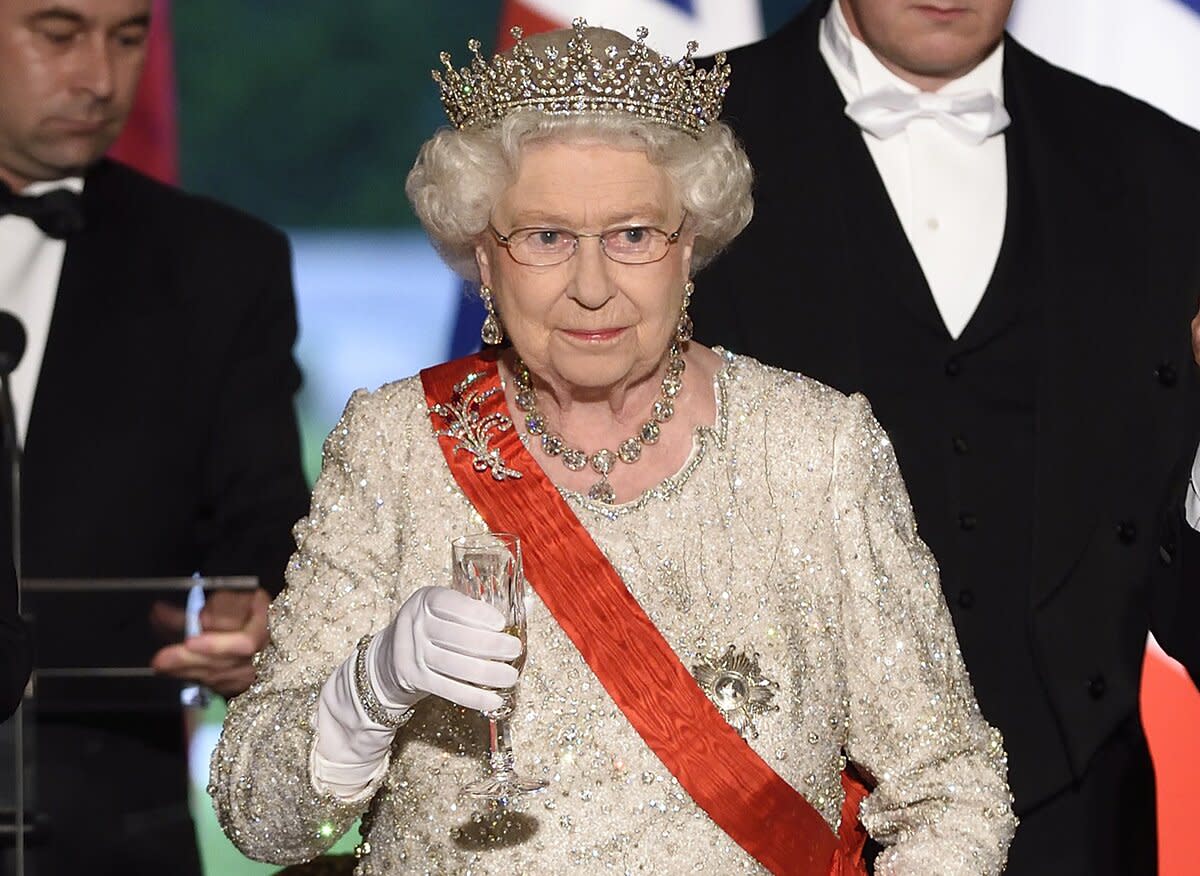
- Oops!Something went wrong.Please try again later.
- Oops!Something went wrong.Please try again later.
ERIC FEFERBERG/AFP/Getty
Queen Elizabeth II was an unwavering leader despite facing a myriad of highs and lows in her 96 years of life.
Her Majesty — who died peacefully on Thursday at her beloved Scottish residence Balmoral Castle — spent 70 years on the throne and marked her Platinum Jubilee in 2022. Throughout her time on the world's most famous throne, the Queen was dedicated to serving her people.
"I have in sincerity pledged myself to your service, as so many of you are pledged to mine," she said on her coronation day in 1953. "Throughout all my life and with all my heart I shall strive to be worthy of your trust."
For more on Queen Elizabeth, listen below to our daily podcast PEOPLE Every Day.
She kept her promise.
Read on for some of the most significant moments when Her Majesty showed her strength.
WORLD WAR II
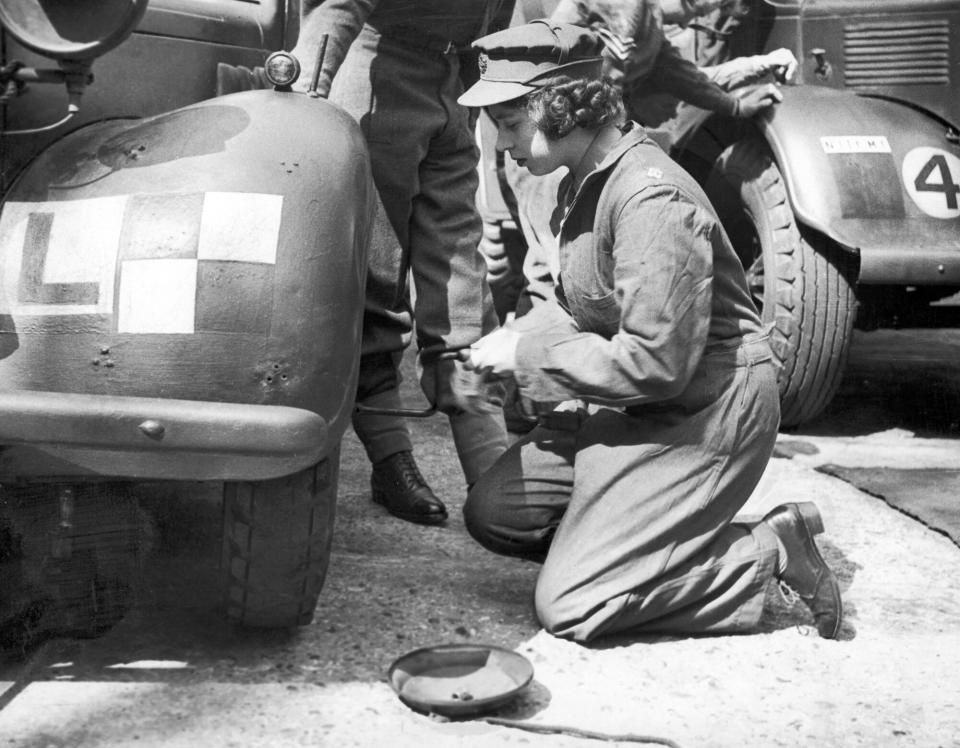
Daily Mirror/Mirrorpix/Mirrorpix via Getty
The Queen was still a princess when the U.K. declared war against Nazi Germany in September 1939, early in World War II. Her parents, King George VI and Queen Elizabeth, remained in London despite ongoing bombings in and around the city.
Five bombs hit Buckingham Palace on Sept. 13, 1940, according to British Heritage Travel Magazine. One member of the Palace staff was killed and three others were injured after the bombs hit the Royal chapel, the Palace gates, the Victoria memorial and other locations.
RELATED: Queen Elizabeth Dead at 96: A Nation Mourns and Remembers Britain's Longest-Reigning Monarch
That same year, Elizabeth and her sister Princess Margaret shared a special message via radio broadcast with children of the war, telling the youngsters, "We know … that in the end all will be well; for God will care for us and give us victory and peace," according to the Royal family's website.
"And when peace comes, remember it will be for us, the children of today, to make the world of tomorrow a better and happier place," she added, per the transcript.
In 1945, Elizabeth joined the Women's Auxiliary Territorial Service under the name Elizabeth Windsor, and was occasionally referred to as No. 230873, according to BBC News. The then-princess was trained as a driver and drove a military truck as part of her service.
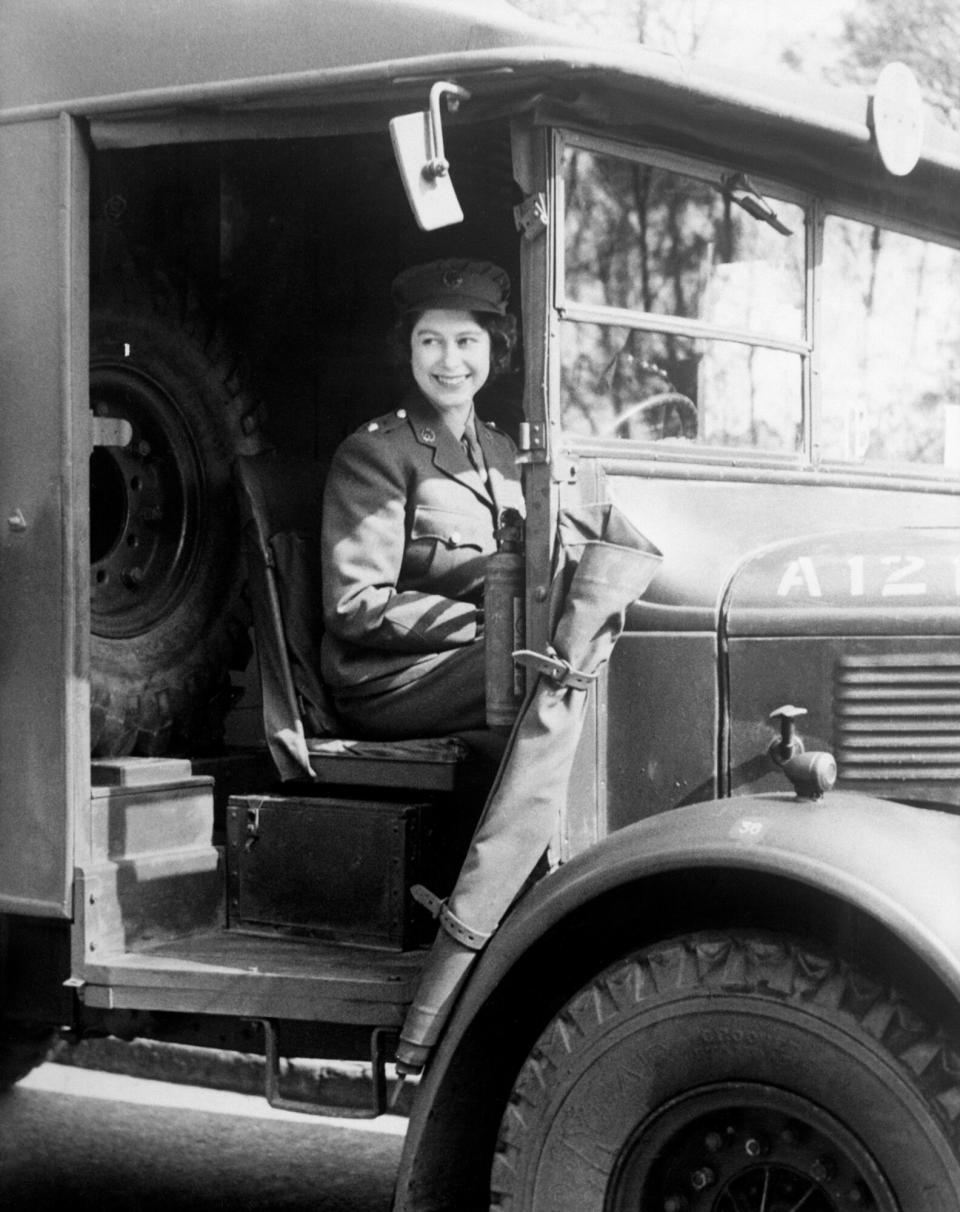
PA Images via Getty
On May 8, 1945, known as Victory in Europe Day, a 19-year-old Elizabeth went incognito with her younger sister Margaret to experience the joy of the people who were celebrating the end of WWII. She called it "one of the most memorable nights of my life" in a BBC recording from 1985.
RELATED: Queen Elizabeth II and Prince Charles' Most Memorable Photos Together
"We cheered the king and queen on the balcony and then walked miles through the street," she said at the time. "I remember lines of unknown people linking arms and walking down Whitehall, all of us just swept along on a tide of happiness and relief."
THE KENNEDY ASSASSINATION
The Queen paid tribute to President John F. Kennedy in May 1965 at a memorial for the late president at Runnymede, according to the magazine British Heritage Travel.
In a news clip shared by British Pathé, the Queen can be heard saying it was "all together fitting" that Kennedy's memorial be located where the Magna Carta was signed in 1215.
RELATED: A Guide to the Royal Family's Official Titles
"This acre of English soil is now bequeathed in perpetuity to the American people in memory of John Fitzgerald Kennedy, who in death my people still mourn, and whom in life they loved and admired," she said at the time.
THE ABERFAN DISASTER
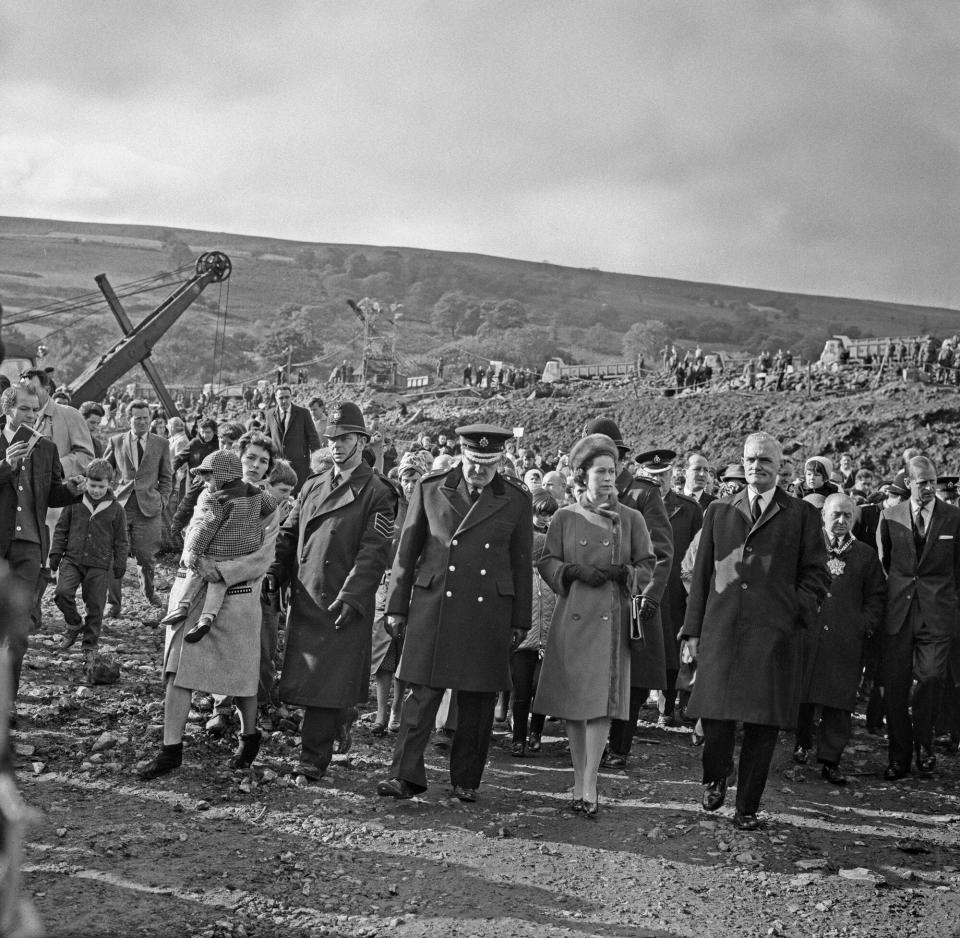
Evening Standard/Hulton Archive/Getty
One of the biggest regrets in the Queen's life was her response to the Aberfan disaster, which is considered one of the worst industrial disasters in British history.
Approximately 150,000 tons of coal waste flooded down a mountainside in South Wales in October 1966, killing 144 people — 116 children and 28 adults — according to ITV.
Eight days passed before the Queen made her first visit to the site, per ITV. In 2002, the Queen said not visiting the site sooner was one of her biggest regrets, per multiple reports.
The disaster and the Queen's response were featured in a season 3 episode of The Crown on Netflix.
THE IRA's ASSASSINATION OF LORD MOUNTBATTEN
The Royal family coped with the assassination of its own in 1979. That August, Lord Louis Mountbatten was killed when the Provisional Irish Republican Army (IRA) blew up his boat while he and three others were lobster fishing in Ireland, per British Heritage Travel.
Lord Mountbatten was vacationing 17 miles from the Northern Ireland border at Mullaghmore, County Sligo when he was killed. He was both a second cousin to the Queen and uncle to her future husband Prince Philip, Duke of Edinburgh.
RELATED: All About Queen Elizabeth and Prince Philip's 8 Grandchildren
Lord Mountbatten was among those "encouraging" a relationship between Elizabeth and Philip, royal historian Christopher Warwick told Vanity Fair in 2020. The couple eventually wed in 1947.
The assassination of Lord Mountbatten was also covered on The Crown, in season 4.
IRA BOMBINGS
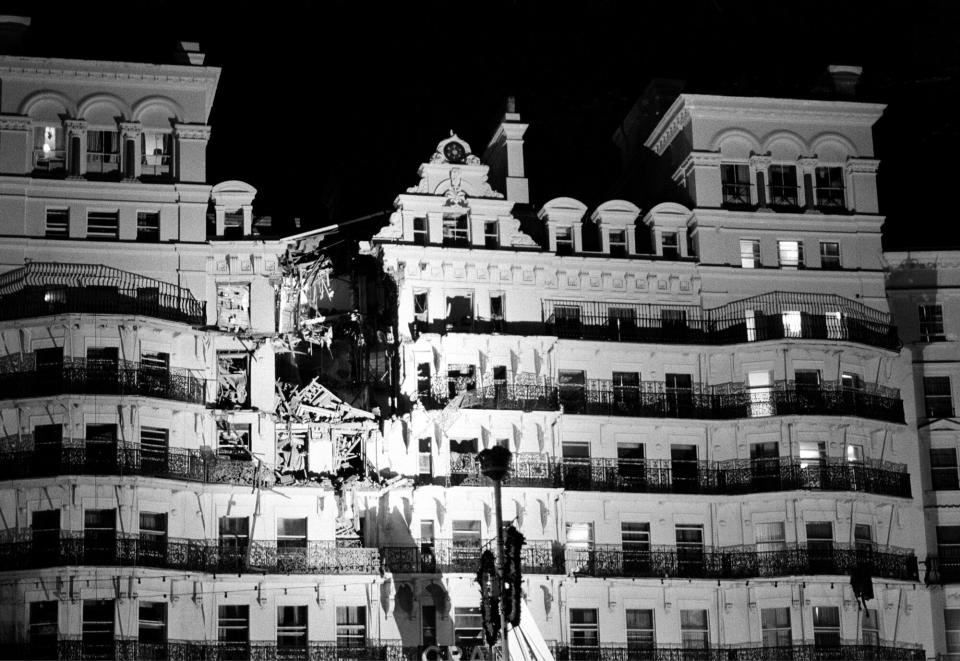
John Downing/Getty
The worst of the IRA bombings in Britain took place between the 1970s and 1990s, according to Reuters. Among them was the 1984 Brighton bombing that killed five people and nearly led to the assassination of then-Prime Minister Margaret Thatcher.
Thatcher and other members of the British Conservative Party were attending a party conference at a local hotel when the bomb went off on Oct. 12, CBC reported.
The bombings took place during a time known as "The Troubles," a 30-year period of conflict between those who wanted Northern Ireland to remain part of the U.K. and those who wanted it to join the republic of Ireland, according to Brittanica.
THE FALKLANDS WAR
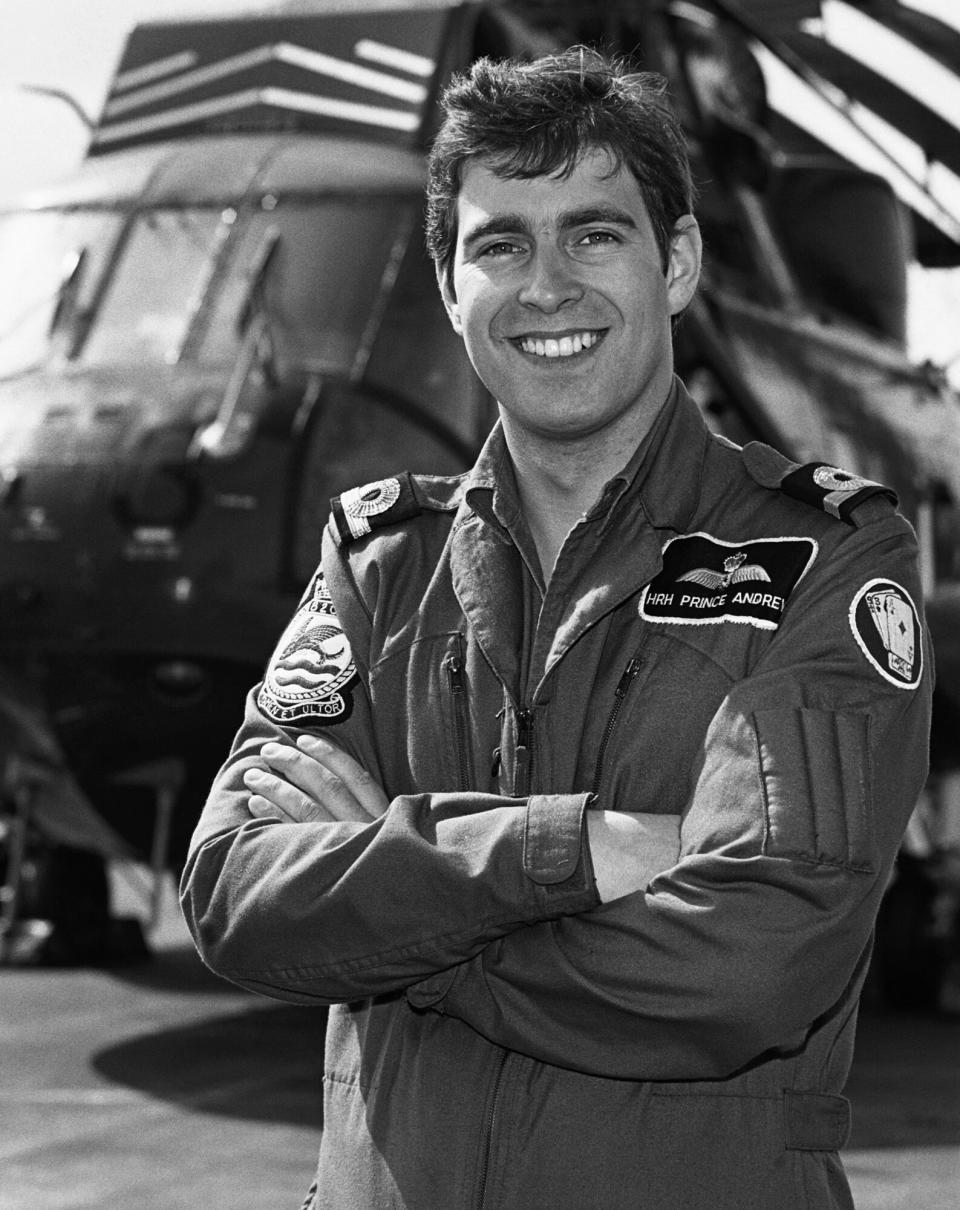
Hulton-Deutsch Collection/CORBIS/Corbis via Getty
Queen Elizabeth also reigned during the Falklands War, a 10-week conflict sparked in April 1982 by the Argentine military's capturing of the British-dependent Islands.
Two-hundred fifty five British servicemen died while attempting to liberate the Islands following the sudden invasion, according to the National Army Museum's website. The Queen's second son Prince Andrew, Duke of York, served during the brief conflict.
In a now-deleted post on his ex-wife Sarah, Duchess of York's Instagram account, Andrew said he returned from the war "a changed man," per BBC News.
RELATED: How King Charles Will Make History When He's Proclaimed Monarch on Saturday
PRINCESS DIANA AND PRINCE CHARLES SEPARATE
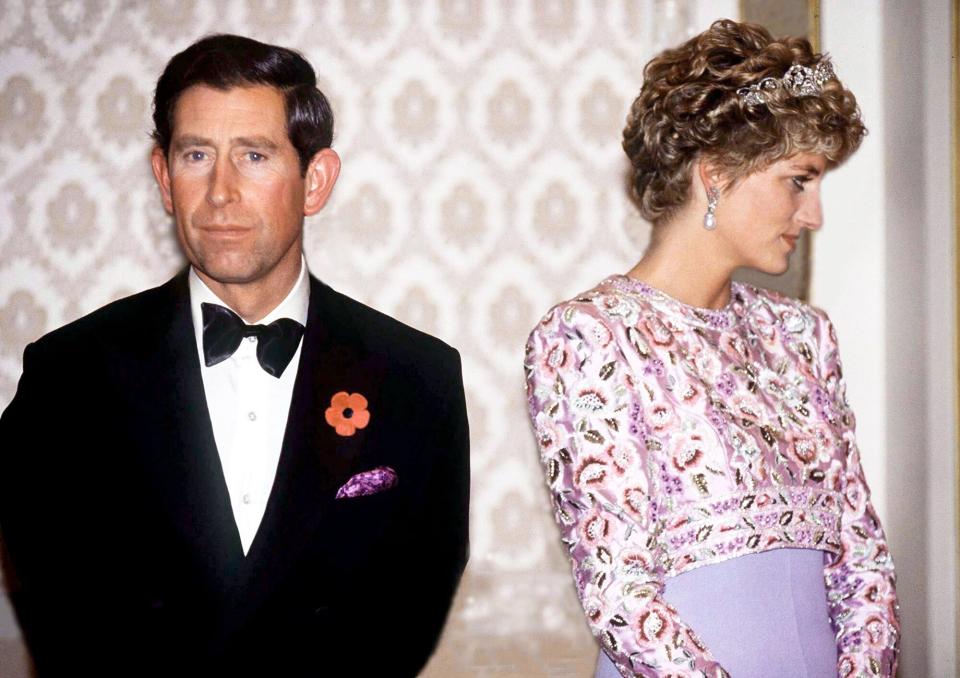
Tim Graham Photo Library
Prince Charles and Princess Diana separated in 1992 — a year the Queen dubbed the "annus horribilis" (Latin for "horrible year") for a variety of reasons, including royal splits and a fire.
"1992 is not a year on which I shall look back with undiluted pleasure. In the words of one of my more sympathetic correspondents, it has turned out to be an 'annus horribilis,' " she said at the time, according to the British Monarchy's archives.
In December 1995, Buckingham Palace said the Queen had urged Charles and Diana to divorce after Diana's candid interview with the BBC's Martin Bashir for Panorama.
RELATED: US Presidents React to News of Queen Elizabeth's Death: 'She Defined An Era'
PRINCE ANDREW AND PRINCESS ANNE'S SEPARATIONS
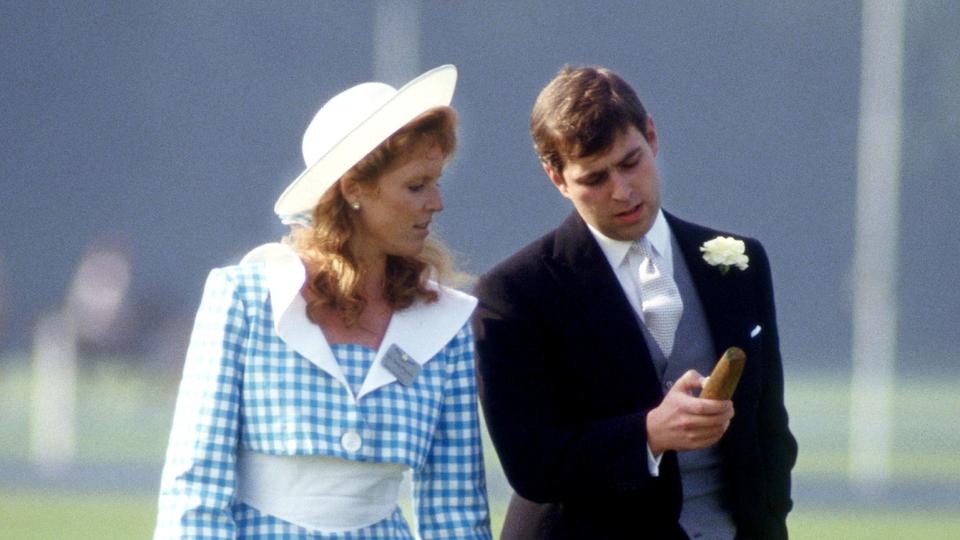
David Levenson/Getty
The year also saw both Prince Andrew and Princess Anne separate from their respective spouses; Sarah, Duchess of York, and British equestrian Mark Phillips.
Andrew and Fergie officially separated in 1992, while Anne and Mark finalized their divorced in that same year, three years after separating.
In the biography, Queen of Our Times: The Life of Queen Elizabeth II, author Robert Hardman said the found the divorce talks "deeply upsetting" despite appearing "outwardly stoical, as ever" to the public.
Never miss a story — sign up for PEOPLE's free weekly newsletter to get the biggest news of the week delivered to your inbox every Friday.
"It distressed her much more than she let on," a former staffer told Hardman, recalling his attempt to put the broken royal marriages into some sort of perspective. "I said, 'Ma'am, it seems to be happening everywhere. This is almost common practice.' But she just said, 'Three out of four!' in sheer sadness and exasperation. One shouldn't underestimate the pain she's been through."
WINDSOR CASTLE FIRE
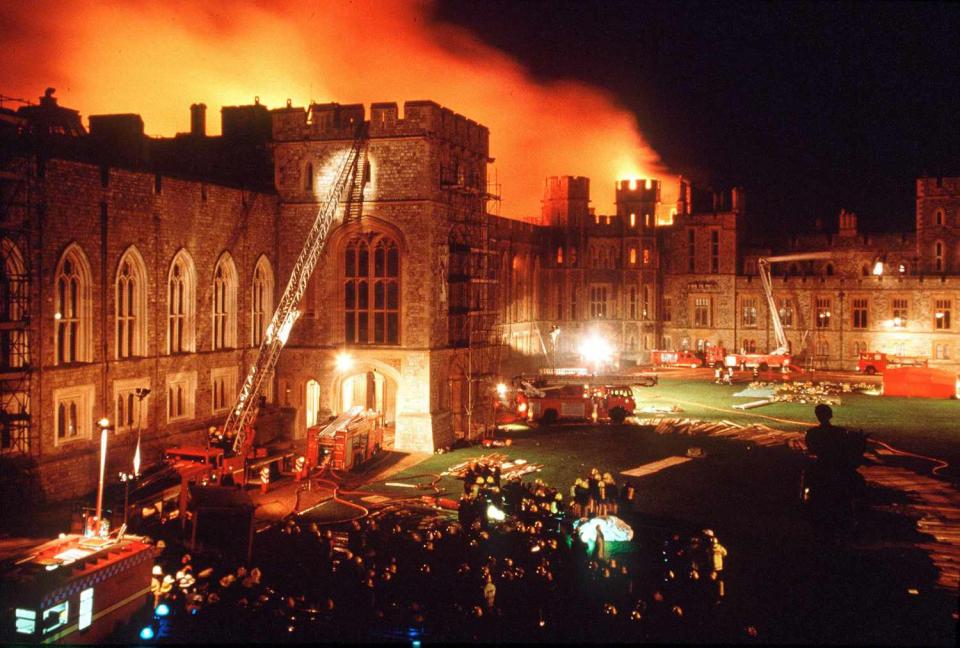
Tim Graham/Getty Windsor Castle fire 1992
This year marks the 30th anniversary of the Windsor Castle fire, which broke out on Nov. 20, 1992 when a faulty spotlight set fire to a curtain in Queen Victoria's chapel.
The blaze — which spread to the Brunswick Tower, St. George's Hall and the surrounding private apartments — caused $47.5 million in damage and took 15 hours to put out.
RELATED: U.K.'s New Prime Minister Liz Truss Remembers Queen Elizabeth as the 'Very Spirit of Great Britain'
The Queen later agreed to meet 70% of the costs and donated $2.6 million of her personal wealth. She also agreed to open Buckingham Palace to the public in order to generate the additional funds needed.
PRINCESS DIANA'S DEATH
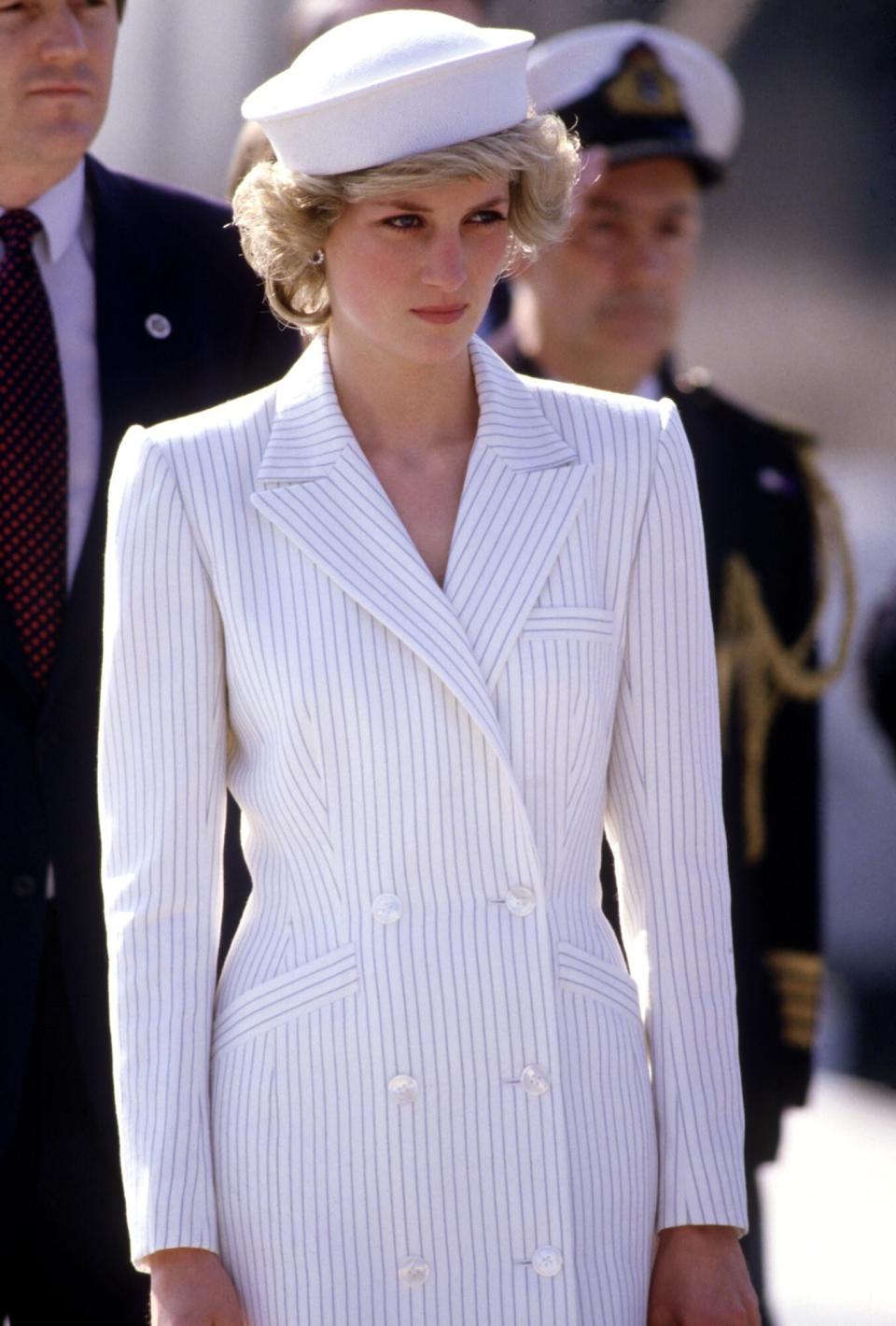
David Levenson/Getty Images Princess Diana in 1985
The Queen faced criticism for her delayed response to Princess Diana's death in 1997, five years after her separation from Charles. Her Majesty's first public address came five days after the accident.
During her speech, the Queen said she wanted to "pay tribute to Diana myself," adding, "She was an exceptional and gifted human being."
RELATED: When Will Queen Elizabeth's Funeral and King Charles' Coronation Take Place?
"In good times and bad, she never lost her capacity to smile and laugh, nor to inspire others with her warmth and kindness," she said.
SEPTEMBER 11 ATTACKS
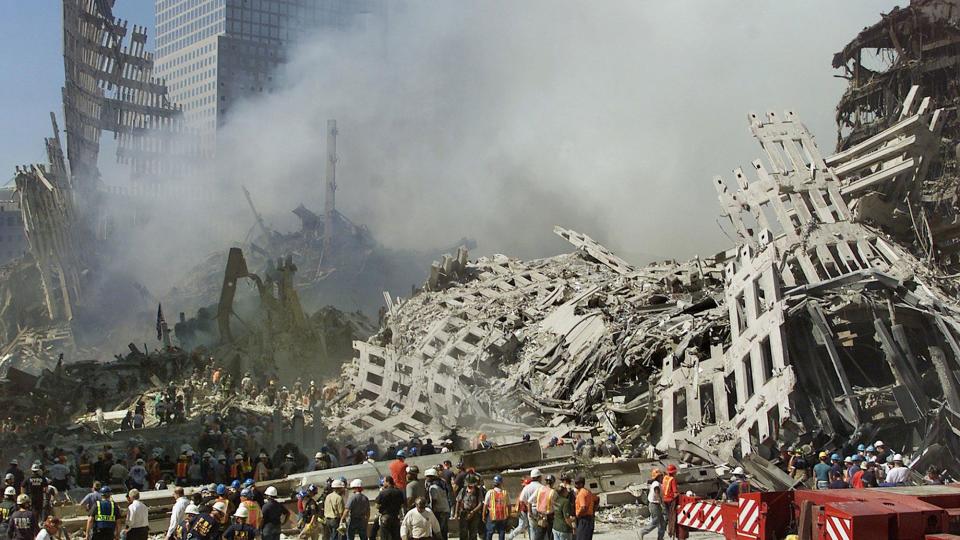
BETH A. KEISER/AFP/Getty The aftermath of the 9/11 attacks
The Queen was one of many world leaders to offer support to the U.S. in the wake of the deadly terrorist attacks on Sept. 11, 2001.
Less than two weeks later, the Queen passed along a special message that was read during a prayer service at the St. Thomas Church in New York City.
RELATED: Everything to Know About King Charles III's Accession to the Throne
"Each and every one of us has been shocked and numbed by what we have witnessed in these recent days," she said at the time, according to The Guardian. "But none of us should doubt the resilience and determination of this great and much loved city and its people."
"Men and women from many nations, from many faiths and from many backgrounds were working together in New York City when this unimaginable outrage overtook them all," she added.
THE GRENFELL TOWER DISASTER
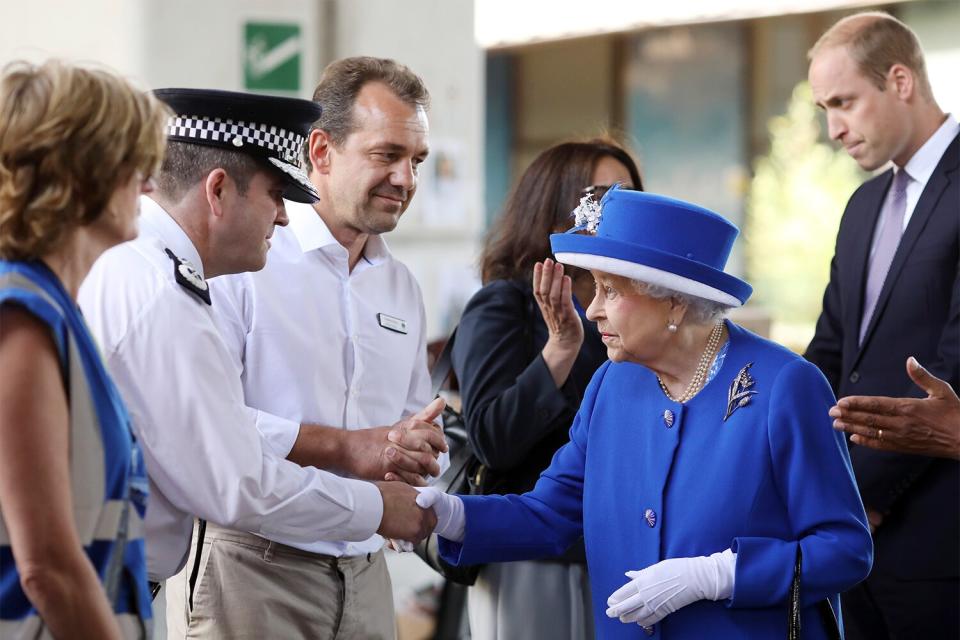
Dan Kitwood/Getty
During the latter years of her reign, her Majesty witnessed one of the worst disasters in British history in the Grenfell Tower fire.
Seventy-two people were killed by the blaze, which broke out at the 23-story flat in North Kensington in June 2017, according to BBC News.
The Queen was among the first leaders to meet with victims of the fire. She and her grandson Prince William made their unannounced visit to the area just two days after the disaster, and spoke with first responders and community representatives as well as local residents.
RELATED: Queen Elizabeth Is Honored with Gun Salutes Across the United Kingdom
The day prior, the Queen and husband Prince Philip expressed sympathy to the families of the victims in a statement signed "Elizabeth R."
"My thoughts and prayers are with those families who have lost loved ones in the Grenfell Tower fire and the many people who are still critically ill in hospital," the monarch said. "Prince Philip and I would like to pay tribute to the bravery of firefighters and other emergency services officers who put their own lives at risk to save others."
THE COVID-19 PANDEMIC
The Queen encouraged strength and resilience shortly after the World Health Organization declared COVID-19 a pandemic in March 2020.
During a televised address in April 2020, the Queen offered words of encouragement to the nation and thanked frontline workers for their efforts to combat the pandemic.
RELATED: The Sweet Story Behind the Photo of Queen Elizabeth Used to Announce Her Death
"Together we are tackling this disease, and I want to reassure you that if we remain united and resolute, then we will overcome it," she said. "I hope in the years to come everyone will be able to take pride in how they responded to this challenge."
"And those who come after us," she added, "will say the Britons of this generation were as strong as any."

